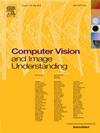Action assessment in rehabilitation: Leveraging machine learning and vision-based analysis
IF 4.3
3区 计算机科学
Q2 COMPUTER SCIENCE, ARTIFICIAL INTELLIGENCE
引用次数: 0
Abstract
Post-hip replacement rehabilitation often depends on exercises under medical supervision. Yet, the lack of therapists, financial limits, and inconsistent evaluations call for a more user-friendly, accessible approach. Our proposed solution is a scalable, affordable system based on computer vision, leveraging machine learning and 2D cameras to provide tailored monitoring. This system is designed to address the shortcomings of conventional rehab methods, facilitating effective healthcare at home. The system’s key feature is the use of DTAN deep learning approach to synchronize exercise data over time, which guarantees precise analysis and evaluation. We also introduce a ‘Golden Feature’—a spatio-temporal element that embodies the essential movement of the exercise, serving as the foundation for aligning signals and identifying crucial exercise intervals. The system employs automated feature extraction and selection, offering valuable insights into the execution of exercises and enhancing the system’s precision. Moreover, it includes a multi-label ML model that not only predicts exercise scores but also forecasts therapists’ feedback for exercises performed partially. Performance of the proposed system is shown to be predict exercise scores with accuracy between 82% and 95%. Due to the automatic feature selection, and alignment methods, the proposed framework is easily scalable to additional exercises.
康复中的行动评估:利用机器学习和基于视觉的分析
髋关节置换术后的康复通常依赖于在医疗监督下的锻炼。然而,缺乏治疗师、财政限制和不一致的评估需要一种更友好、更容易获得的方法。我们提出的解决方案是基于计算机视觉的可扩展,经济实惠的系统,利用机器学习和2D相机提供量身定制的监控。该系统旨在解决传统康复方法的缺点,促进在家有效的医疗保健。该系统的主要特点是使用DTAN深度学习方法随着时间的推移同步运动数据,从而保证精确的分析和评估。我们还引入了一个“黄金特征”——一个体现锻炼基本运动的时空元素,作为对齐信号和识别关键锻炼间隔的基础。该系统采用自动特征提取和选择,为练习的执行提供了有价值的见解,并提高了系统的精度。此外,它还包括一个多标签ML模型,不仅可以预测运动分数,还可以预测治疗师对部分运动的反馈。该系统预测运动分数的准确率在82%到95%之间。由于采用自动特征选择和对齐方法,所提出的框架很容易扩展到其他练习。
本文章由计算机程序翻译,如有差异,请以英文原文为准。
求助全文
约1分钟内获得全文
求助全文
来源期刊

Computer Vision and Image Understanding
工程技术-工程:电子与电气
CiteScore
7.80
自引率
4.40%
发文量
112
审稿时长
79 days
期刊介绍:
The central focus of this journal is the computer analysis of pictorial information. Computer Vision and Image Understanding publishes papers covering all aspects of image analysis from the low-level, iconic processes of early vision to the high-level, symbolic processes of recognition and interpretation. A wide range of topics in the image understanding area is covered, including papers offering insights that differ from predominant views.
Research Areas Include:
• Theory
• Early vision
• Data structures and representations
• Shape
• Range
• Motion
• Matching and recognition
• Architecture and languages
• Vision systems
 求助内容:
求助内容: 应助结果提醒方式:
应助结果提醒方式:


